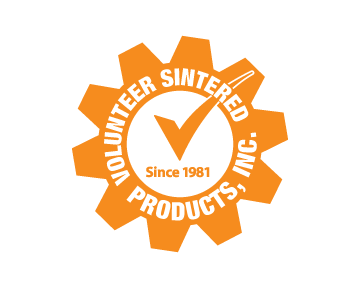Exploring the Common Uses of Sintered Metal Products
Sintered metals are everywhere in modern life, often hidden inside machinery, vehicles, and everyday gadgets. These parts are produced by the process of powder metallurgy, where ultra-fine powders of metals are compressed into the desired shape and subjected to heat, just below the melting point of the metals. The result is durable, precise, and highly effective components essential in diverse industries, from automotive and aerospace to medical devices and consumer electronics.
What is unique to the sintered metals is the strength, accuracy, and design flexibility that they provide. With sintering, producers can fabricate extremely difficult shapes with very minimal wasted material and the desired properties to get the job done in tough circumstances. As more and more sectors require lower-cost and more sustainable production methods, sintering becomes more valuable than ever.
What Are Sintered Metal Products?
Sintering allows you to press together metal powders in a mold, then heat them up so that the particles act like welds and stick together. Unlike conventional casting or machining, the entire piece does not need to be melted. You get a component that can be made more efficiently with less scrap materials.
The choice of material depends on the intended application. Iron and steel are used for strength, copper for conductivity, and titanium for its lightweight yet durable qualities. Thanks to advanced metal powder solutions, manufacturers can fine-tune the process to create parts with specific properties such as wear resistance, mechanical strength, porosity, or heat tolerance.
Key Advantages of Sintering
Economical Manufacturing–Sintering enables near-net-shape production, reducing the need for additional machining and saving costs.
Control of Porosity–Parts can be made porous to enable functions such as self-lubricating bearings or industrial filtration.
Sustainability–Because of high material utilization and lower energy requirements, the process is more sustainable than some of the conventional techniques.
Reliability and Strength–Sintered parts have homogeneous structures which give relatively consistent quality and strength.
These benefits explain why sintered metals have become a preferred solution for industries seeking both performance and cost savings.
Applications of Sintered Metal Products
1. Automotive and Transportation
The automotive industry relies heavily on sintered metal products because they provide durability, accuracy, and cost efficiency. Components such as gears, sprockets, valve guides, and bearings are frequently produced using this method. Oil-impregnated bearings help reduce friction and extend the lifespan of moving parts, while precisely manufactured gears contribute to smoother transmissions and reliable steering systems. With the rise of electric vehicles, sintered components are increasingly used in compact motors and lightweight structural parts, enhancing performance and energy efficiency.
2. Aerospace and Electric Vehicles
In aerospace, weight reduction and performance are vital. Sintered high-performance alloys and titanium are deployed in turbine blades, fuel system items, and structures that can hold up against extreme conditions. Electric vehicles benefit from sintered alloys that balance strength with reduced weight, improving energy efficiency and safety.
3. Industrial Machinery
Sintered metals are widely used in heavy machinery, robotics, and automated equipment. Typical applications include gears, bushings, and pump components, all requiring durability under constant stress. In robotics, sintered components provide the precision needed for smooth, accurate movements, while in pumps and valves, they deliver consistent performance over long operating cycles.
4. Applications to Medicine and Dentistry
The medical industry depends on sintered metals due to their resistance to corrosion and their biocompatibility. These products can be used on surgical instrumentation, orthopedic devices, dental prosthetics, and diagnosis equipment. Sintered metals are ideal because they offer consistent quality and can withstand sterilization, ensuring safety for medical and dental applications.
5. Filter Systems
Porous sintered metals are ideal filters. You will find them installed in water treatment plants, chemical plants, and pharmaceutical facilities to separate liquids and gases at very fine grades. Porous sintered metals can endure high temperatures as well as high pressure and can be used where it would be difficult to apply normal filters.
6. Electronics and Consumer Products
From the lock on the door to the motor on a household appliance, sintered parts can be found on many of today's consumer items. Electronics also use them as needed for their motors, switches, and connectors that demand precision and economies of scale production. Their large volume production capability that does not have to come at the cost of quality makes them the consumer goods product of choice.
7. Specialized Applications
Except for mass industries, sintered metals have distinct uses:
Bronze bearings offer long-wearing lubrication with minimal maintenance.
Temperature control devices utilize sintered copper to develop heat pipes and wick structures that manage temperatures within electronic devices.
Protective clothing and equipment use composites like tungsten carbide to produce cutting tools, drilling materials, and armor materials as well.
Conclusion
Sintered metal products are a cornerstone of modern manufacturing, enabling industries to produce reliable, efficient, and innovative components. From improving fuel efficiency in cars to ensuring precision in medical tools, their impact is far-reaching and continues to expand as technology advances.
At Volunteer Sintered Products, we specialize in designing and manufacturing components that meet the highest standards of performance and reliability. By combining expertise with advanced powder metallurgy techniques, we deliver solutions that support industries today and prepare them for the challenges of tomorrow.



